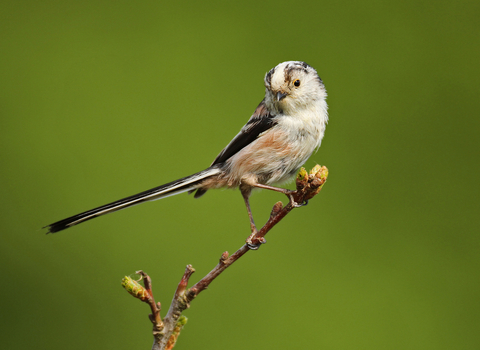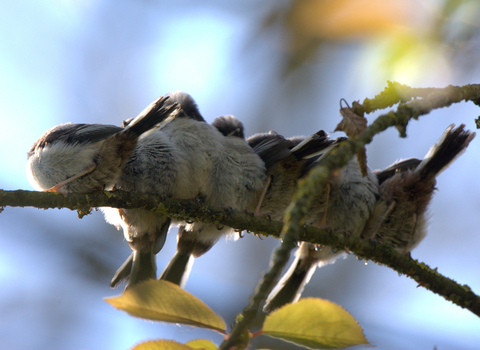
Long-tailed tit ©Jon Hawkins - Surrey Hills Photography
Long-tailed tit
Scientific name
Aegithalos caudatusWhen to see
January to DecemberSpecies information
Category
Statistics
Length: 14cmWingspan: 18cm
Weight: 9g
Average lifespan: 2 years
About
The long-tailed tit is a tiny bird of hedgerows, woodland, parks and gardens. It builds a domed nest out of moss in a bush or the fork of a tree, and camouflages it with cobwebs and lichen. It lines the nest with as many as 1,500 feathers to make it soft for the eight to twelve eggs it lays. Long-tailed tits are active feeders, hunting out insects and spiders among the smaller branches and leaves of trees in woodlands. But they are also well-adapted to gardens and towns and will visit birdtables and feeders. In winter, they form flocks with other tits, roaming woodlands, parks and gardens, and commons and heaths with suitable bushes.How to identify
The long-tailed tit does, indeed, have a long black-and-white tail that is bigger than its body. It has a black, white and pink back, a white head with a wide, black eyestripe, and a pale pink belly.Distribution
Widespread.In our area
Long-tailed tits are an increasingly common visitor to the suburban gardens of Shrewsbury, Ludlow and Whitchurch, particularly in areas with good connectivity of tree and shrub cover. But they could show up in flocks in any garden, particularly during the winter when they are searching for new food sources.
Did you know?
Sociable and noisy, long-tailed tits are usually spotted roaming about in flocks of 20 or more birds during the winter. At night, long-tailed tits cluster together to keep warm.Watch
Long-tailed Tit (https://vimeo.com/447525696)
Long-tailed Tit by Russell Savory
Long-tailed tits are an increasingly common visitor to the suburban gardens of Shrewsbury, Ludlow and Whitchurch, particularly in areas with good connectivity of tree and shrub cover. But they could show up in flocks in any garden, particularly during the winter when they are searching for new food sources.

